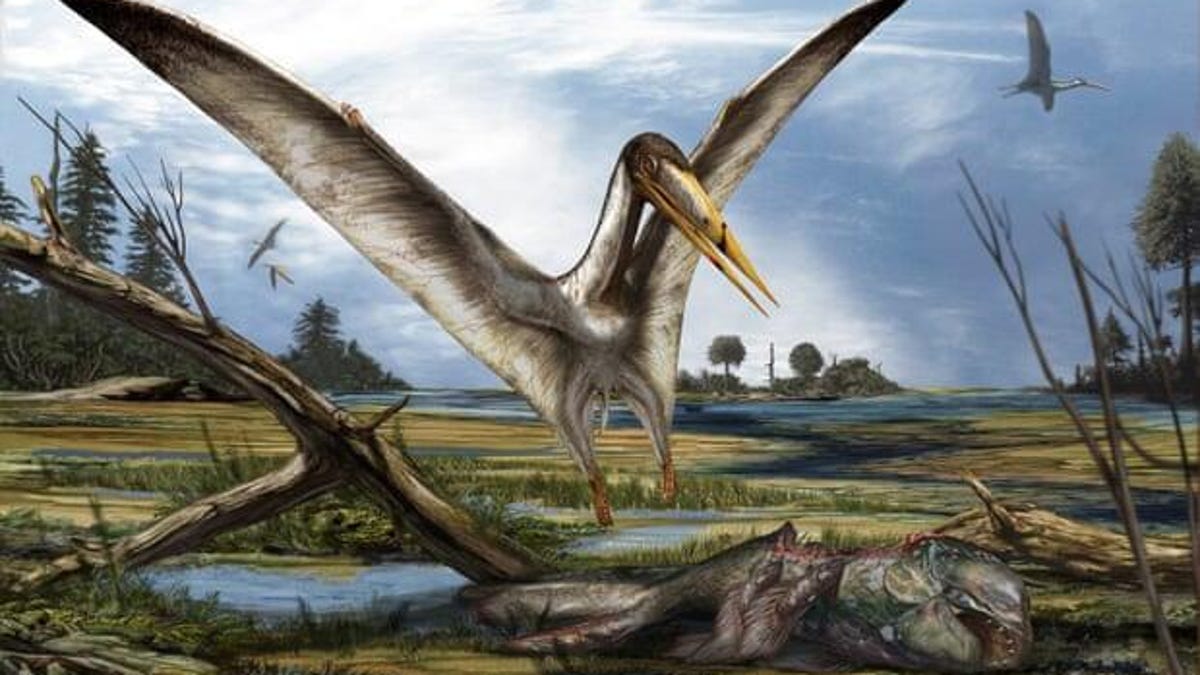Mysterious remains of ancient flying reptile found hidden among shark fossils
A British paleontologist discovers fragments of a mysterious new species of toothless pterosaur in a surprising place.

A type of North African pterosaur, believed to be similar to the one uncovered by the University of Portsmouth researchers.
Combing through a drawer of shark fossils early this year, British doctoral student Roy Smith made a surprising and thrilling discovery: remains of a flying reptile that lived more than 60 million years ago.
Smith, a Ph.D. candidate at the UK's University of Portsmouth, was examining fossils of shark fin spines from two British museum collections when he noticed some fragments contained neural foramina, or tiny but perceptible holes where nerves come to the surface to sense prey. Sharks fin spines don't have these, so Smith instantly knew some of the fragments weren't like the others.
In fact, they didn't even come from creatures of the sea, but from creatures of the air: toothless pterosaurs, an enigmatic flying reptile and the earliest vertebrates known to have evolved powered flight. Smith details the discovery in a study just published online in the journal Proceedings of the Geologists' Association.
Two of the specimens discovered can be identified as a pterosaur (Greek for winged lizard) called Ornithostoma. Another likely represents a new species.
Roy Smith holds a small pterosaur fossil he found in a drawer full of shark spine fragments.
"I like the fact that this little bone has been sitting in a museum drawer for more than 120 years, and no shark expert ever came along and said, 'Oi, this ain't no shark,'" said professor Dave Martill, a paleobiologist at the University of Portsmouth and Smith's supervisor. "It took a pterosaur researcher with a bit of spare time on his hands to make this great discovery."
That researcher, 26, has been enamored with fossil-hunting since childhood. But this find easily ranks at the top of his paleontologist-pride list.
"I was incredibly happy and excited as toothless pterosaur remains are very rare in Britain," says Smith, who has been studying the preservation of pterosaurs for his Ph.D. "Only two species have ever been found in England."
Smith found the pterosaur fossils in collections belonging both to the Sedgwick Museum of Earth Sciences at the University of Cambridge and the Booth Museum of Natural History in Brighton. The discovery hints at a greater diversity of these rare toothless pterosaurs. But it's also significant for demonstrating that studying existing materials can yield entirely new scientific discoveries.
"It's amazing that new specimens of unknown animals can be found lurking in museum drawers," Smith says.
The bit of beak belonging to the new species differs from Ornithostoma in subtle ways, "perhaps in the way that a great white egret might differ from a heron," Martill explains, but the fossils are too fragmented to lead to a new species name.
"It is a palaeontological mystery," says Smith, who doubts any further remains of this species will be found. He remains hopeful, however, and plans to keep searching once museums open post-COVID.

